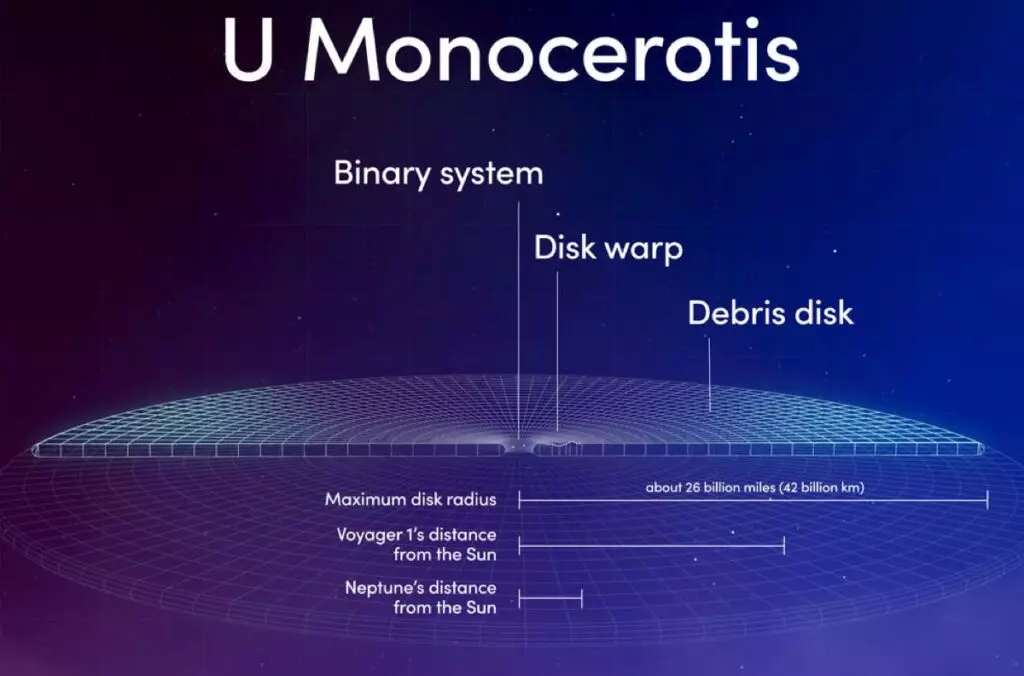
The unicorn dual system U (U M MON) is in 3600 light years and includes a couple of stars that make a complete turn around the total center of masses in about 6.5 of our year. One of the stars is a swollen yellow supergigant with dimensions almost a hundred times more than the sun with a mass of only twice. He constantly thrills, then expanding, then compressing on the scale of about three months. The star refers to variables of the RV Taurus type - one of several hundred discovered in the entire Milky Way.
Her companion on U M Mon is learned worse; It is assumed that this star is somewhat younger, although it has similar dimensions and remains the same variable RV Taurus. They are surrounded by a gaspile disk of a substance that emit either both stars or only more old "main". This unusual system is devoted to the new work of Laura Vega (Laura Vega) from NASA and its colleagues, the article is published in The Astrophysical Journal.
The authors collected an extensive array of information, including archival data from the first images of U M MON, made at the end of the XIX century, and until recent observations conducted using the XMM-NEWTON Space X-ray Observatory and the Maunakea Observatory Radio Telececopes. This made it possible to estimate the outer diameter of the U MON gas dial of about 82.5 billion kilometers (550 А.) and to detect a small "hole" in its center, free space with dimensions of no more than 1.35 billion kilometers (no more than 9 A. .), What corresponds to the maximum distance between the stars of the system.

The system of rotation of the system is rejected from the surveillance line from the Earth for about 75 degrees, and when the stars are at the maximum distance from each other, they are built up to about this line. Periodic outbreaks in the system arise due to the ripple of the "main" star, and also due to the fact that, moving along its orbit, once every 6.5 years, it is almost completely hidden by a gas-pepped cloud.
With the help of archival data, scientists also noticed the changes in the luminosity of the U Mon periodicity of about 60 years - maybe they are caused by the passage of large bunch of gas and dust. In addition, the interaction of stars with a substance on the inner edge of the disk creates the flow of matter flowing towards the "younger" star. This causes additional flashes in the XMM-NEWTon X-ray with the XMM-NEWTON probe: according to scientists, the u Mon has become the first variable of the Taurus RV type, which was observed in this wave range.
Source: Naked Science
